Initial Design Ideas:
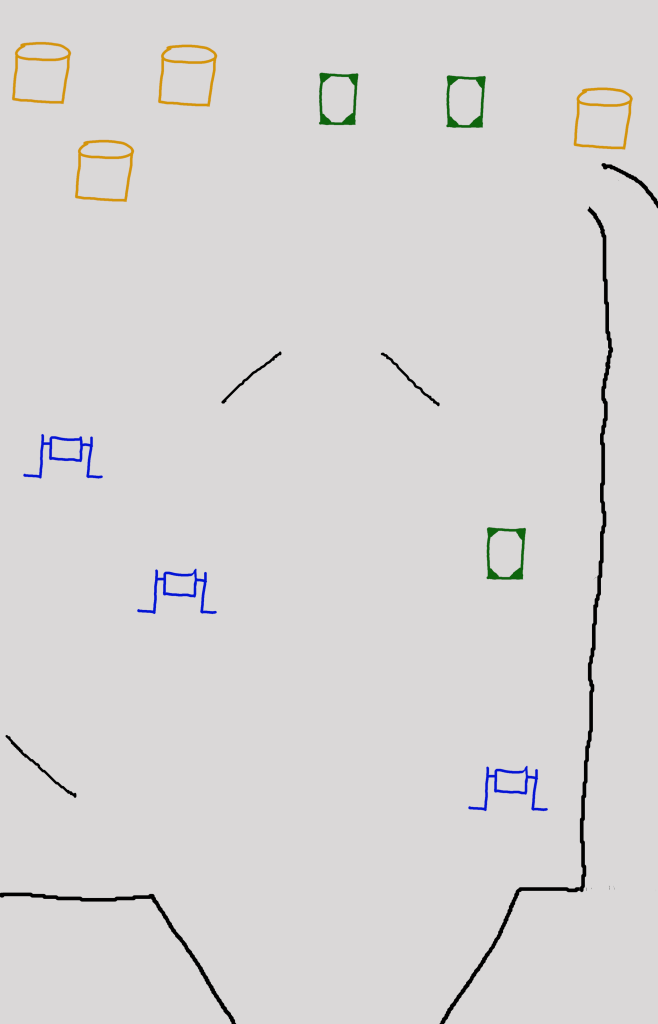
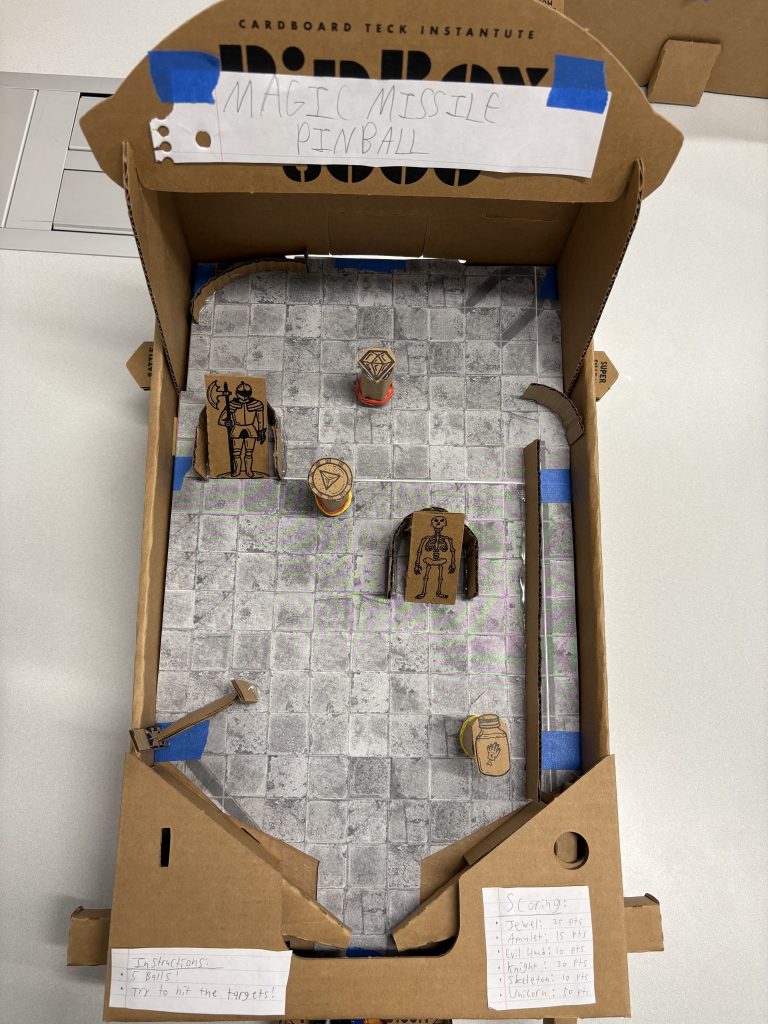
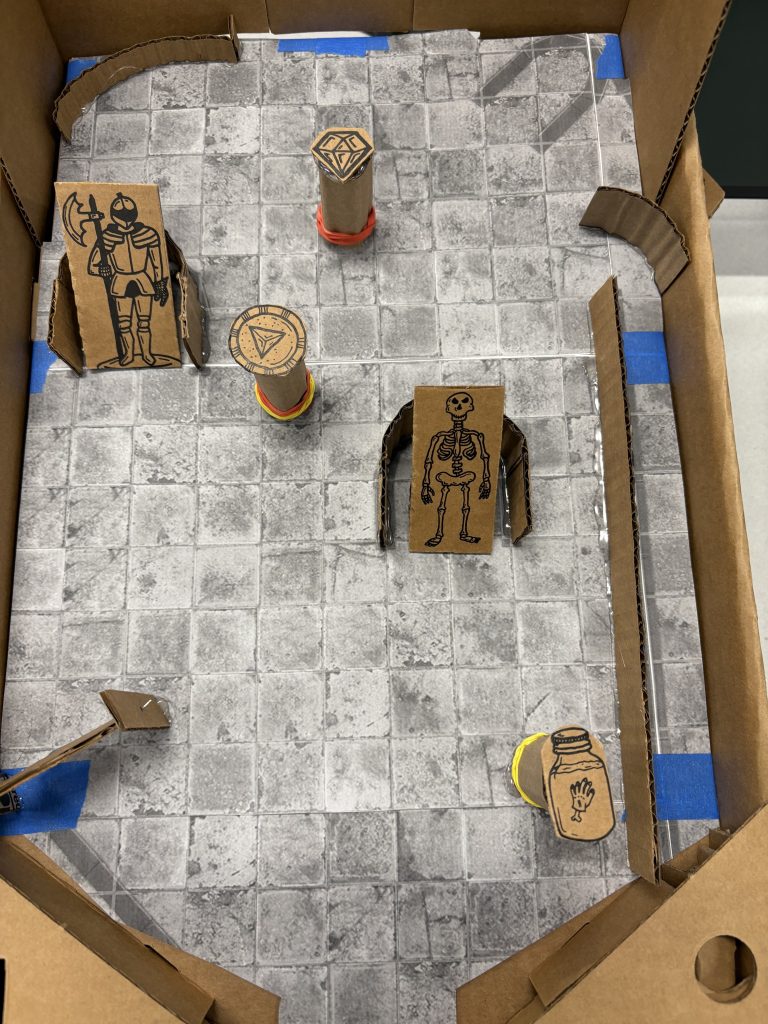
While building the body of the Pinbox 3000, I saw all of the classic fantasy decorations on the side of the frames and knew I wanted to use them for my machine. My initial idea was to have the player take on the role of a wizard casting a spell to try and hit various targets, but that did not come across in the initial build. I struggled to think of what I could build out of just cardboard and in a limited amount of time, so I settled on some classic pinball elements: spinners, bumpers and targets. The pieces from the Pinbox 3000 kit proved to lend themselves well to these kinds of components. The knight and skeleton are tall pieces that make good targets, the unicorn and octopus are wide and shorter to make good spinners, and the other pieces are small enough to make good bumper tops.
The general idea was to place the elements around the playboard so that the ball could ricochet between a few before rolling down to the bumpers. I originally planned to section off the unicorn spinner such that the ball would have to roll into it from above, but I mismeasured my playfield cover, which I used to position the other playfield elements. I decided to angle the knight and skeleton targets slightly so that the player could more easily see them. I added an angled stand to the underside of each to create this effect. The bumpers were made of cardboard tubes with an image glued on top and a couple of rubber bands wrapped around the bottom.
The rules are incredibly simple. The player gets five balls and tries to keep them alive while hitting targets to score points.
Iterations and Player Feedback:
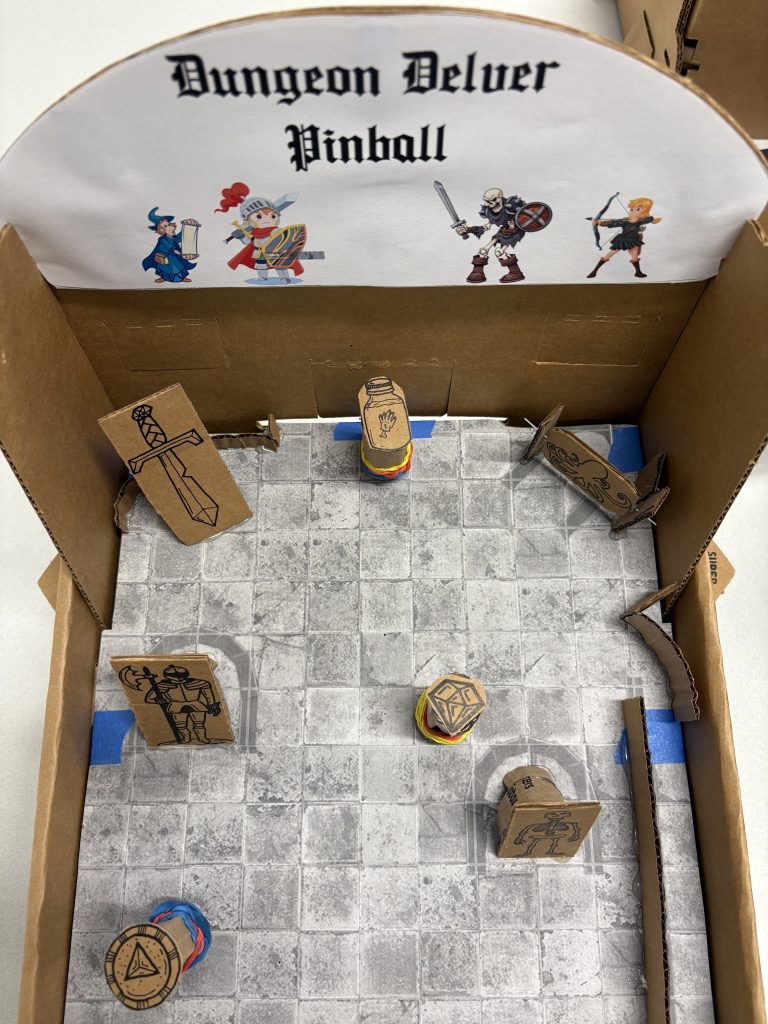
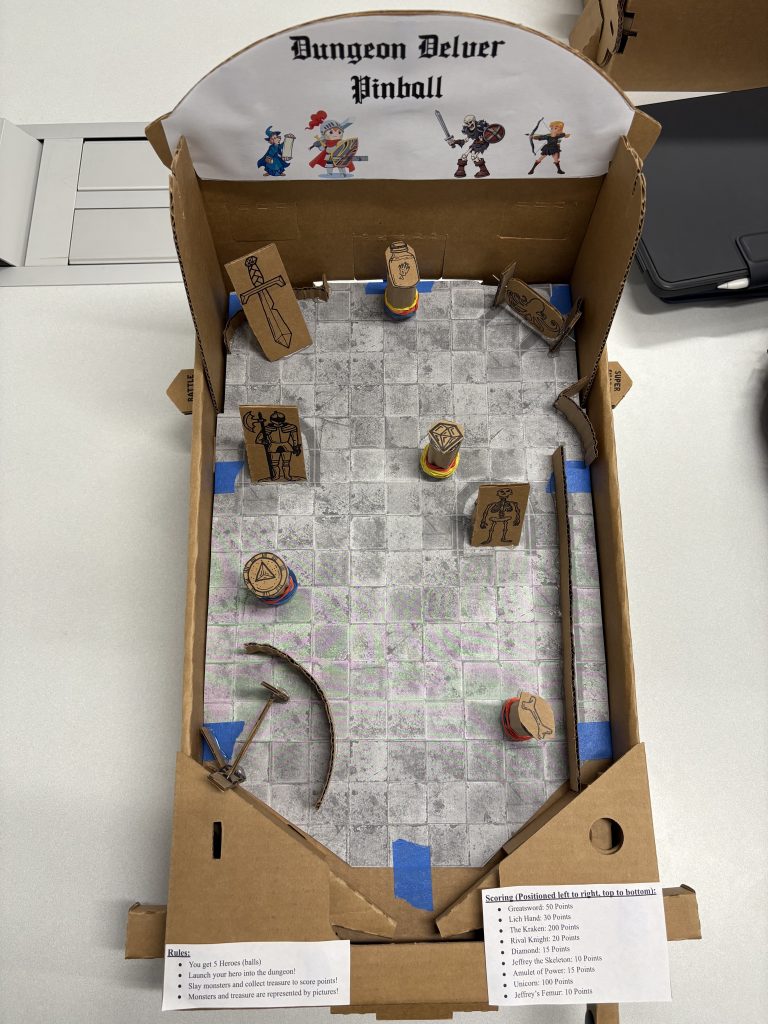
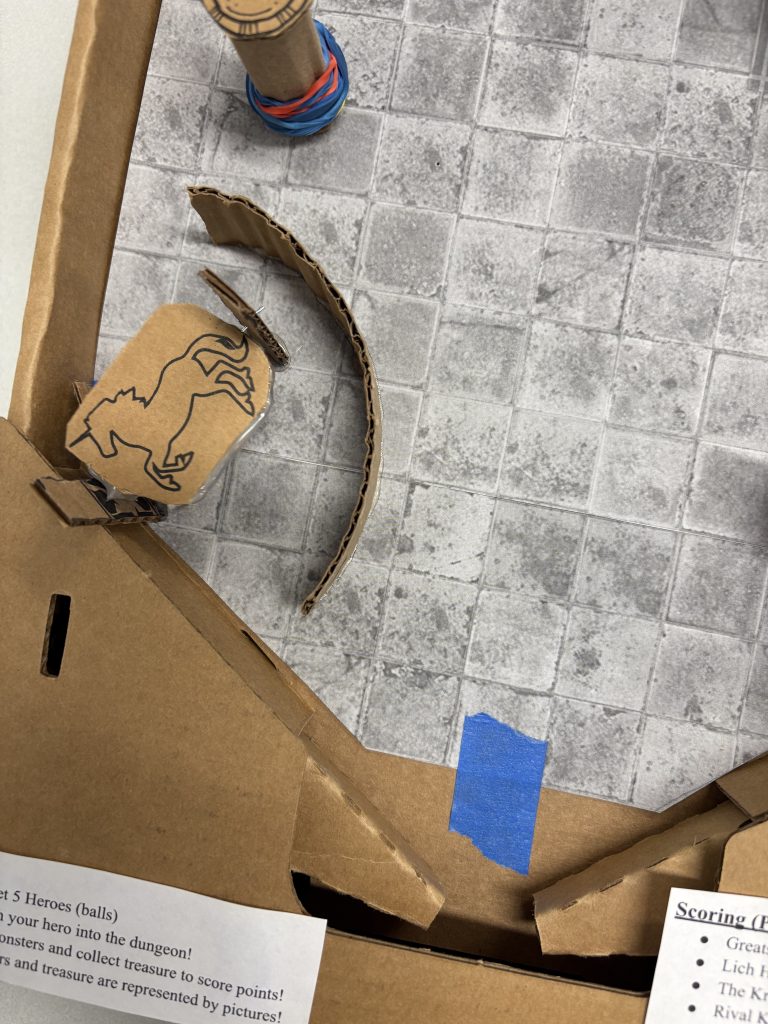
The initial build had a lot of smaller problems that quickly added up. First and foremost, none of the players were able to pick up on the theme. I made the quickest fix possible by changing the theme from a wizard shooting spells to the player sending heroes into a dungeon. There were also issues with the scoring instruction formatting, namely the lack of rhyme or reason to the order of objects. I had ordered them by element type (bumper, spinner, target), but the players preferred having them organized from left to right, top to bottom.
The players did like how each element felt very tactile and satisfying to hit, with the unicorn spinner being the overall favorite. The targets and bumpers both had their issues. The angle on the targets was too low, making them more like ramps. Several players launched the ball out of the playfield after hitting these targets. The teaching assistant suggested that I put a sheet of plexiglass over the playfield to prevent this. However, I cannot afford that and I only had two days to make improvements, so I used cardboard to boost the targets forwards a little. The bumpers were initially not very bouncy. They were not secured very well and did not have enough rubber bands. Now they are attached to the playboard with a thumbtack through the bottom and have between six and eight rubber bands apiece to increase the bounce potential.

Moving to the Virtual Version:
The main thing I want to add in the virtual version of this machine is more complexity. Right now, it is the most basic a pinball machine could be: it has flippers and things to hit. I would like to have a machine that has other features that players expect, like a multiball or some kind of score multiplier. I think some kind of combo of hitting pieces could trigger the multiball.
I would also like to find a way to make the knight and skeleton targets more interesting. Currently, they are the most static pieces in the prototype. I would like to add some sort of movement, either horizontal or a pop-up, that makes them more engaging.
I would also like to add some sort of ramp or rail. I find them to be very satisfying elements of pinball games, but I was not brave enough to make one out of cardboard or try to figure out the physics to get one working on a physical board. I also want to add a kicker, possibly behind the octopus spinner, to add a bit more variety to the game.
I am excited about a few physical quality of life features offered by Virtual Pinball, such as score tracking and the gate on the ball release. I could also add a gate to the unicorn spinner corral to keep the ball out unless it enters from above. Also, having true bumpers will be very helpful in making the game feel more like pinball.
Lastly, as a challenge, I want to try and add more for my theme. In my instructions, I say that the balls are all heroes. I think it would be interesting if each ball had something unique about it that would change the game slightly as it progressed. For example, the final ball might be a “healer” who can restore one other ball if the player completes a challenge, or a “thief” that scores extra points from “treasure” elements. However, this is a stretch goal that will depend on other projects that I also need to work on.
Image Citations:
Wizard: https://creazilla.com/media/clipart/3169829/wizard
Playboard pieces: Provided in Pinbox 3000 Kit https://pinbox3000.com/products/pinbox-3000
Playboard cover: Created by me in Dungeon Painter Studio http://pyromancers.com/dungeon-painter-online/
